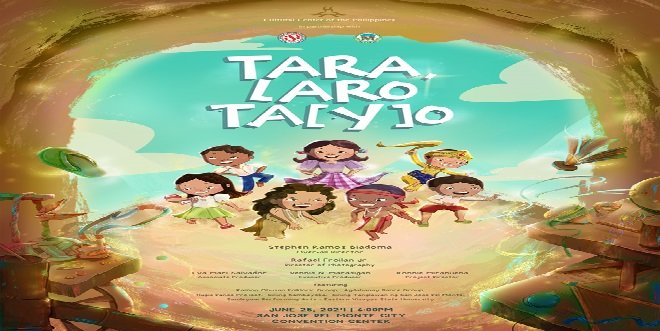Believing in the profound significance of dance and arts in Filipino culture, the Cultural Center of the Philippines (CCP) embarks on a landmark project called “Tara, Laro Ta(y)o.” This initiative aims to preserve and promote the rich tapestry of Philippine dance, particularly by intertwining the joyous spirit of traditional games with the dynamism of indigenous dances.
The project features six dance films that explore how traditional games from Philippine indigenous communities in Luzon, Visayas, and Mindanao inspire and enrich indigenous dances. These include Mali, a Dumagat traditional dance; Koirdas di la Bordon from Cuyo, Palawan; Sipit-sipit from Eastern Samar; Kikembe from Cuartero, Capiz; Kasipa sa Manggis from Marawi, Lanao del Sur; and Buwa-buwan from Butuan City, Agusan del Norte.
For instance, Mali, akin to agawan base, is a beloved game among the Dumagats of San Jose del Monte, Bulacan. It involves two teams vying to protect their bases while playing under the moonlight by the river. The accompanying dance film, directed by Roberto P. Ramirez, Jr. and choreographed by Ramirez Jr. and John Rick Bugas, weaves a tale of Emman, who competes passionately in the game and unexpectedly finds love amidst the competition.
Koirdas di la Bordon, often played during wakes in Palawan, involves passing a ring while singing the Bordon. Directed and choreographed by Percival V. Carel, the dance film depicts how this game brings light-hearted distraction to mourners, highlighting moments of joy even in times of grief.

Sipit-sipit from Eastern Samar, showcased by the Samleyaw Performing Arts Group in a film directed by Jerry E. Mores and Mark Doclotero, celebrates camaraderie and competition through playful movements mimicking the act of tucking slippers.
Kikembe from Cuartero, Capiz, directed by Jocelyn Mayo and Ramie Capuyan, features the Agdahanay Folkloric Group and portrays how this circle game fosters friendship among classmates.
In Kasipa sa Manggis from Marawi, Lanao del Sur, participants aim to knock down manggis fruits with kicks, as described in the Maranaw epic, Darangen. Directed by Benhur Abulencia and performed by Sining Kambayoka Ensemble, the dance film narrates the journey of a Meranaw boy through the competitive games, emphasizing family values.
Buwa-buwan, played by Agusan and Lapakonon Manobo children, involves runners evading the “taya” who attempts to tag and block them. Directed by Carlito Amalla and Gerard Hechanova, with choreography by Dariel Endencia and Railey Clark Baring, the Hugis Dance Project of Butuan City brings this lively outdoor game to life.
Each film is accompanied by videos exploring the origins, attire, music, and rules of the respective dances, promoting folk and indigenous arts while evoking nostalgia. The CCP also leverages modern technology to create instructional videos and books documenting unpublished dances from various regions, including details on costumes, music, instruments, and choreography performed by regional dance groups.
“The long-term goal is to establish a comprehensive archive of Philippine dances, ensuring future generations deeply understand and appreciate our cultural heritage. We intend to distribute these resources to educational institutions and libraries across the Philippines,” CCP President Kaye C. Tinga emphasized.
In partnership with the Philippine Folk Dance Society and the City Government of San Jose Del Monte, CCP will premiere the Tara, Laro Ta(y)o films on June 25 at the San Jose Del Monte Convention Center, Bulacan, coinciding with the 42nd National Folk Dance Workshop scheduled from June 24-28.










